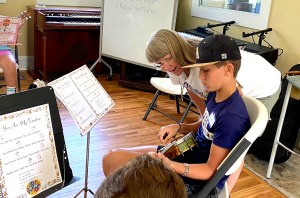Manage pests in your fall and winter gardens
Published 2:00 pm Wednesday, October 16, 2019

- Floating row covers can be used a physical barrier between pests and a main crop. The covers can keep moths from laying eggs, preventing the establishment of pest populations.
AUBURN UNIVERSITY — Now that fall is upon us, gardeners should take the steps to manage pests in their fall and winter vegetable gardens. People often forget this is the time of year when some pest populations are extremely high.
Dani Carroll, an Alabama Cooperative Extension System regional agent for home grounds, gardens and home pests, said an often overlooked method for pest management is a type of pest-exclusion system.
Trending
“Home gardeners can use a pest-exclusion system for short-term control,” Carroll said. “These systems involve using floating row covers as a physical barrier between the pests and main crop.”
Floating row covers
There are two basic types of floating row covers — heavyweight and lightweight.
“You often see heavyweight floating row covers used on strawberries for frost protection,” Carroll said. “Lightweight row covers, often referred to as insect exclusion fabrics, are used as insect barriers.”
These pest-exclusion fabrics are made form spun-bonded polyester or polypropylene. They are thin enough to allow the majority of the light, air, rain or overhead irrigation to pass through, but thick enough to stop the large insect species. The covers can keep moths from laying eggs, preventing the establishment of pest populations.
Perfect for cool-season vegetables
Trending
According to Carroll, cool-season vegetables are perfect for using row covers.
“For cool-season vegetables, growers can use row covers as a method to keep insects out,” she said. “They also capture extra heat for dampening and fluctuating temperatures, which make plants grow faster. Crops like cabbage, turnips and kale are not as tall as other vegetables, such as tomatoes, making row covers easier to use on them. With most cool-season crops, growers don’t have to worry about excluding pollinating insects.”
Installation
Floating row covers are not difficult to install. First, a grower will need to determine the length and the width of the row cover they need.
“Don’t forget, while row covers are laid over the top of plants, the vegetables will grow,” Carroll said. “Make sure to provide enough row cover to allow for that growth.”
Completely cover the crop from top to bottom and side to side. Covers can be laid directly over the crop or affixed to a frame. Carroll said it is not too difficult to bend PVC piping over a raised bed to create a frame on which to drape the row cover.
“Leave plenty of fabric so the edges can be secured on all sides,” she said. “Secure the fabric by using bricks, blocks or scoops of soil to completely seal off the plants so insects cannot enter.”
When using row covers on raised beds, attached the cover to the foundation with staples or paper clips. Make sure to check the seal around the bed after storms and other weather events.
More information
Floating row covers are great tools to use for insect control. However, growers can use other control methods in conjunction with these covers. Rotating crops, having healthy soils, using certain plant varieties and even using beneficial insects can all assist in pest control.
Additional details about pest monitoring and scouting can be found on the Integrated Pest Management page of the Extension website at www.aces.edu.
— Miller writes for the Alabama Cooperative Extension System. For information on topics related to the home and garden, contact any ACES office. The Limestone County office is at 1109 W. Market St. in Athens. Office hours are 8 a.m. to 4:30 p.m. Mondays through Fridays. For more information, call 256-232-5510 or visit www.aces.edu.



